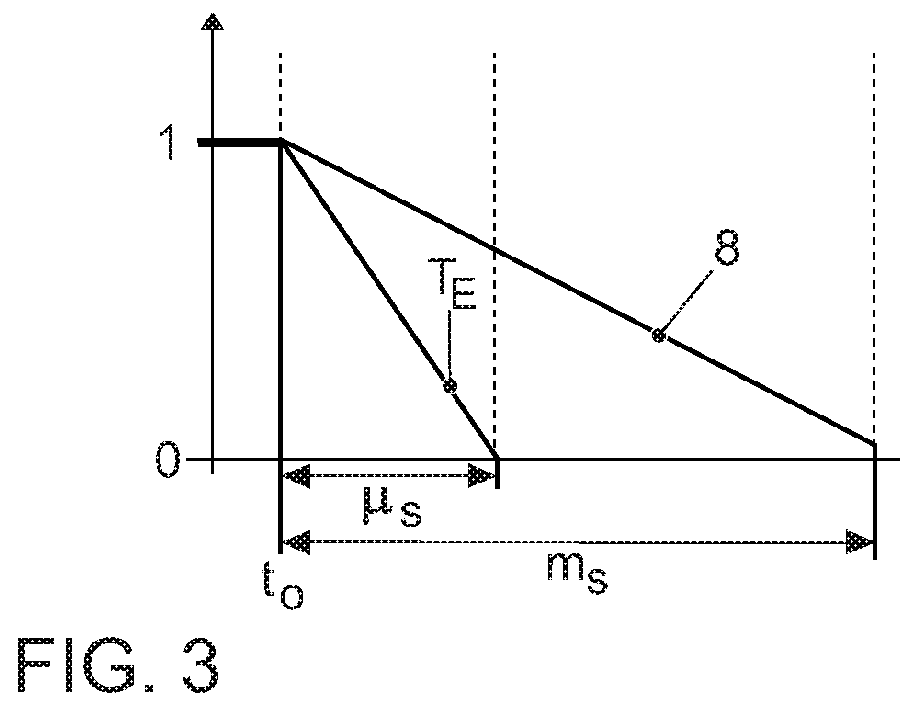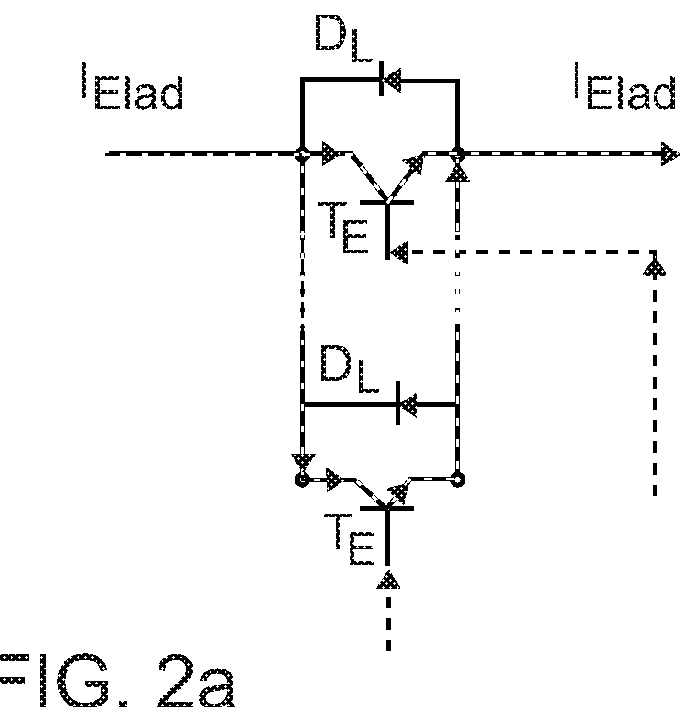Battery disconnecting device
a battery disconnecting and battery technology, applied in secondary cell servicing/maintenance, cell components, pulse techniques, etc., can solve the problems of increasing losses, current flowing through two diodes, and relatively slow switching time in comparison to power semiconductors, so as to reduce power loss and fast switching times
- Summary
- Abstract
- Description
- Claims
- Application Information
AI Technical Summary
Benefits of technology
Problems solved by technology
Method used
Image
Examples
Embodiment Construction
[0029]Before the invention is elaborated upon, the state of the art will first be explained making reference to FIGS. 4 and 5. The traction system 1 comprises a battery 2 having a plurality of series-connected battery cells 3, power electronics 4 with DC link capacitor CZK, an electric machine 5 as well as a battery disconnecting device 6. The battery disconnecting device 6 has a first relay 7 and a second relay 8 by means of which the plus line and the minus line can be switched on or off.
[0030]Moreover, the battery disconnecting device 6 has a current sensor 9, a fuse 10, a control unit 11, a precharging relay SVL and a precharging resistor RVL. The DC link capacitor CZK is charged with a moderate current via the precharging relay SVL and the precharging resistor RVL. For this purpose, first of all, the relay 7 is left open and the relay 8 as well as the precharging relay SVL are closed. Once the DC link capacitor CZK is charged, the relay 7 is closed and the precharging relay SVL...
PUM
 Login to View More
Login to View More Abstract
Description
Claims
Application Information
 Login to View More
Login to View More - R&D
- Intellectual Property
- Life Sciences
- Materials
- Tech Scout
- Unparalleled Data Quality
- Higher Quality Content
- 60% Fewer Hallucinations
Browse by: Latest US Patents, China's latest patents, Technical Efficacy Thesaurus, Application Domain, Technology Topic, Popular Technical Reports.
© 2025 PatSnap. All rights reserved.Legal|Privacy policy|Modern Slavery Act Transparency Statement|Sitemap|About US| Contact US: help@patsnap.com



